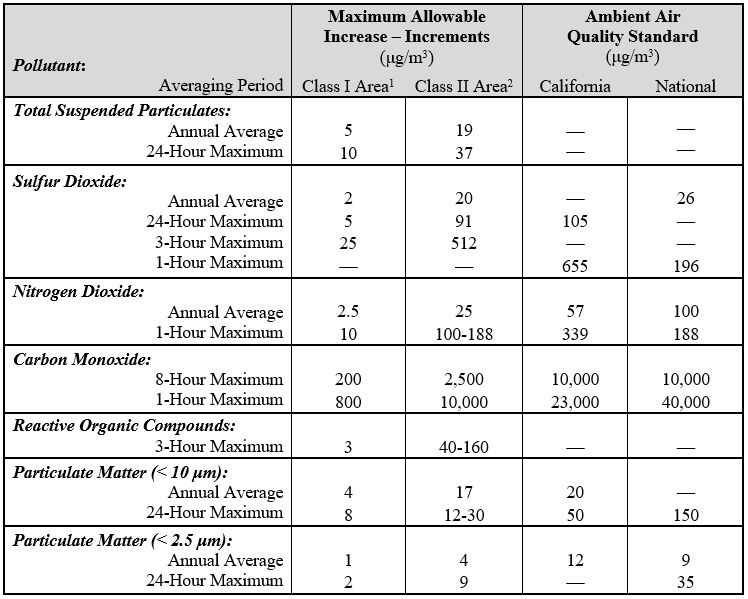Overview
An air quality impact assessment (AQIA) is required for projects that meet any of the following criteria:
- The source has a potential to emit of any pollutant or its precursors that is equal to or greater than any threshold shown in Table 4 of District Rule 802.
- The Control Officer determined that the new or modified stationary source has the potential to cause or contribute to a violation of any ambient air quality standard or increment.
- The new or modified stationary source has the potential to emit more than 20 pounds per hour of any attainment pollutant or total suspended particulates (particulate matter).
- An AQIA is necessary as part of the California Environmental Quality Act (CEQA) process.
An AQIA can consist of an ambient air quality standard analysis, an increment analysis, or both. See the District’s AQIA Modeling Guidelines for more information. A history of updates to the AQIA Modeling Guidelines is also available. The Modeling Protocol Tables for AQIA Report must be submitted with the AQIA Report. See the District’s Meteorological Data webpage to download meteorological data for use in AERMOD.
Air Quality Standards and Increments
The table below displays the applicable ambient air quality standards and increment thresholds for AQIAs performed for projects in Santa Barbara County. Email the District at toxics@sbcapcd.org to confirm the modeling requirements before submitting an AQIA for your project.

1 “Class I Area” means any area having air quality or air quality related values requiring special protection, and which has been designated Class I by a federal or state authority empowered to make such designation. See the District’s AQIA: Class I Area webpage for more information.
2 “Class II Area” means any area not designated as a Class I or Class III Area pursuant to 40 CFR 51.166(e).
Other Requirements
If a project requires an AQIA, the following may also be required:
- Soil & Vegetation Analysis and Visibility Analysis (see the District’s Guidelines)
- Health Risk Assessment (see the District’s Form-15i)
- More information can be found at the District’s Air Toxics for Business webpage

